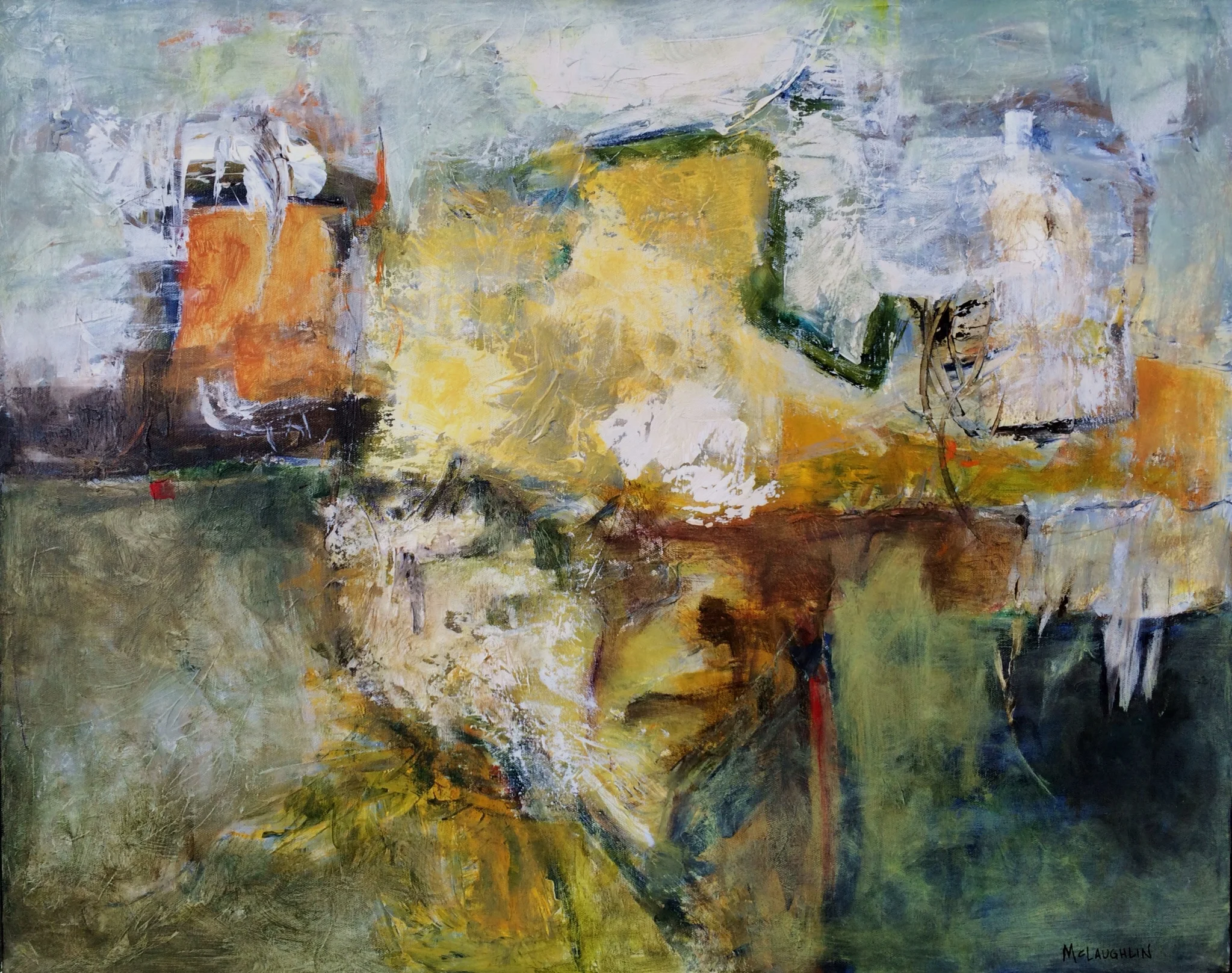At a recent art show, my favorite conversation came from two young ladies who stopped by. One was trying to explain to her friend about abstract. She needed help -I could sense her frustration and I stepped in.
Let me back up for a moment to say, this is not an uncommon thing, which is why I decided to write this blog entry. For those who aren’t well versed in the art world, or haven’t been exposed to contemporary exhibits at galleries and museums, it can be curious and confusing, and for some, even intimidating.
Most abstract artists come from a background of learning the basics and traditional techniques. I come from a traditional art education, studying graphic design, anatomy art, perspective, working with still life and landscape, but as time went on, I found myself more and more drawn to abstraction. There are rules that need to be applied to have a successful piece of work. My feeling is that, until you have a grasp of these rules, you cannot successfully break them.
Of the rules, composition is the most important. There needs to be a balance of space, movement, interest, etc. to make the piece feel complete. Proportion, use of positive and negative space, lights and darks, color, contrast. These are all things you will find in any work of art, and if applied correctly, you will find something that works.
As my conversation with the two ladies continued, I thought I might be dealing with a right brain vs left brain situation. When I said that to them, it hit home – the one struggling to understand is a scientist! She needed to make sense and see something she recognized, and felt a need to understand the whys and whats about abstract. There are many articles and studies on this theory. The general idea is that people with a dominant left brain are more attracted to science, math, and are more analytical, and right brain dominant people are more creative, intuitive and spontaneous. Perhaps abstract art appeals more to people who are more attuned to form, movement, color, etc. and whether those forms take shape in a recognizable form is irrelevant.
I picked up my photo book, and in an attempt to help my new left-brained scientist friend understand the principles of abstract, I turned the book upside down and sideways. The familiar images that made sense were suddenly unrecognizable, but the colors, the shapes, the proportion, the composition still made the photos interesting. I think (I hope!) she had a bit of a breakthrough in understanding!
Visual art is subjective, of course, as is any form of art, be it music, writing, sculpture, etc. You like what you like. Just as you might like rock and roll, but not all bands or not all songs from your favorite band, it’s the same with visual art. When looking at any art, traditional, ancient, abstract, etc. Ask yourself these things: What drew me to this particular work of art? What do I like about it? How do I feel when I look at it? Does it make me want to look deeper and more intensely at it? Could I live with it? Do you have an emotional response to it (excitement, calm, inquisitive, etc.) Do the colors appeal to you? Is it he subject matter (or lack of)?
The important thing is, to be open-minded about it, look at all sorts of art, and when you have the opportunity, talk with artists! I’m so happy that those two girls engaged in conversation with me that day! The scientist admitted to being a little shy to ask about it because she was afraid to sound naïve or to be insulting to me for not getting it. Nothing could be further from the truth! Of course, I can’t answer for all, but my artist friends and I love feedback and questions, positive and negative. We love people who are curious about our thoughts and process.
When the girls walked away, I didn’t know if they liked my work or not, and it didn’t matter. What was important was that they had this conversation, and I hope it opened them up to more dialog, and better understanding. If you’ve struggled with understanding it, I hope this has helped you, too. If you have a question about abstract in general, or my art in particular, please feel free to email and ask anything about it!

